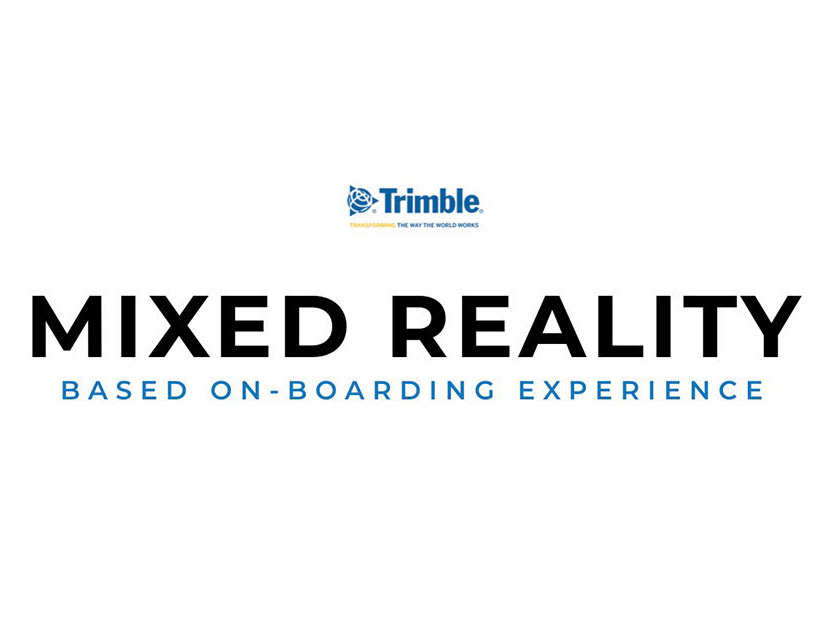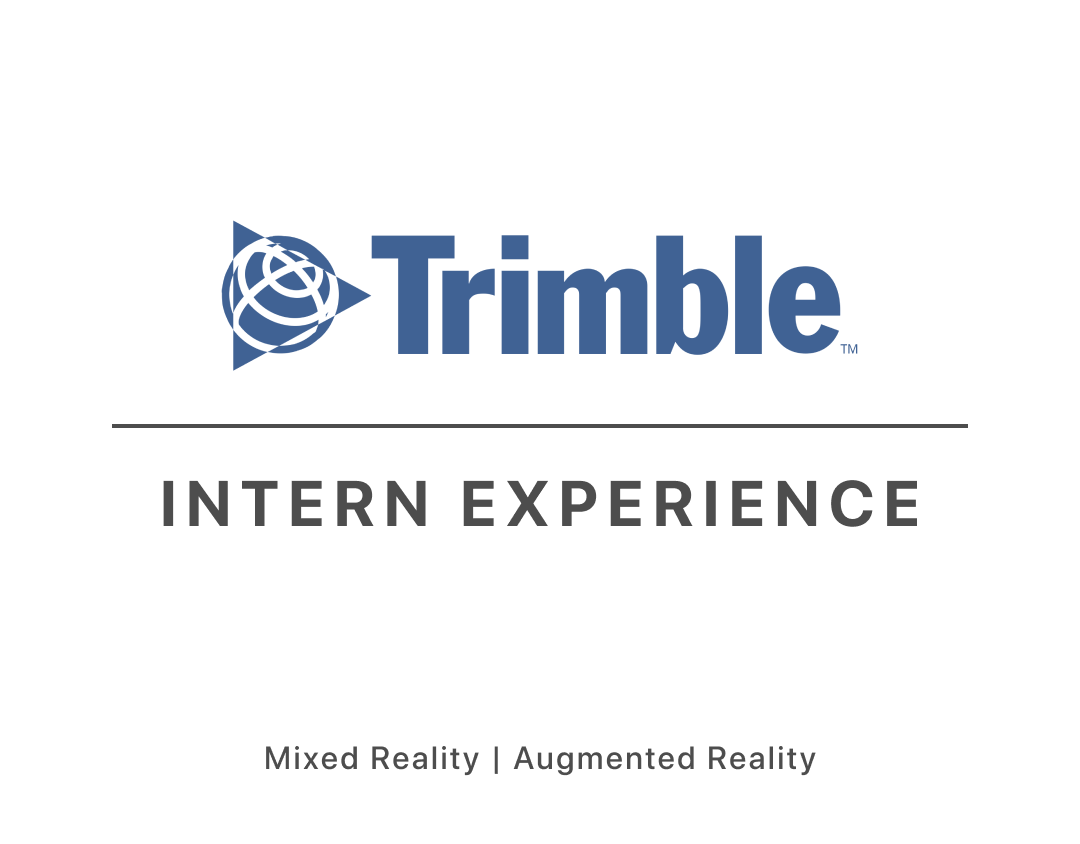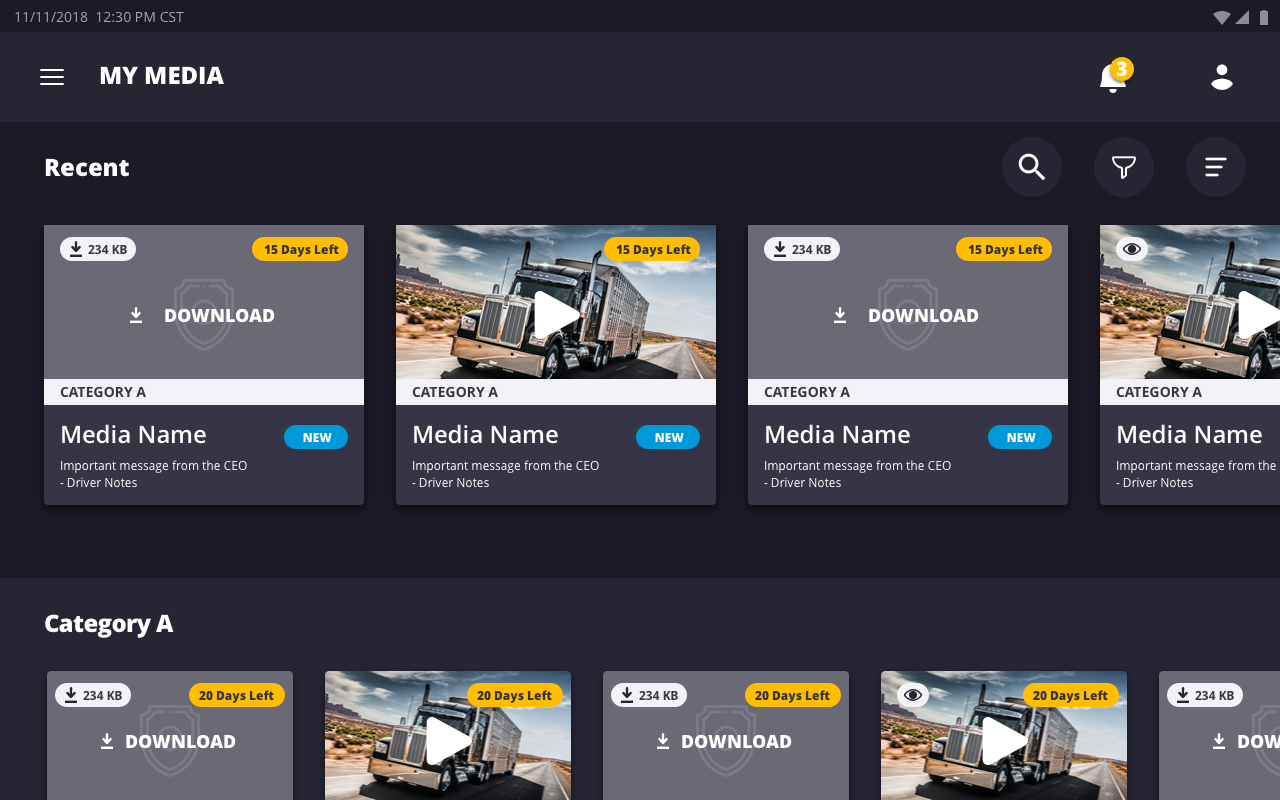
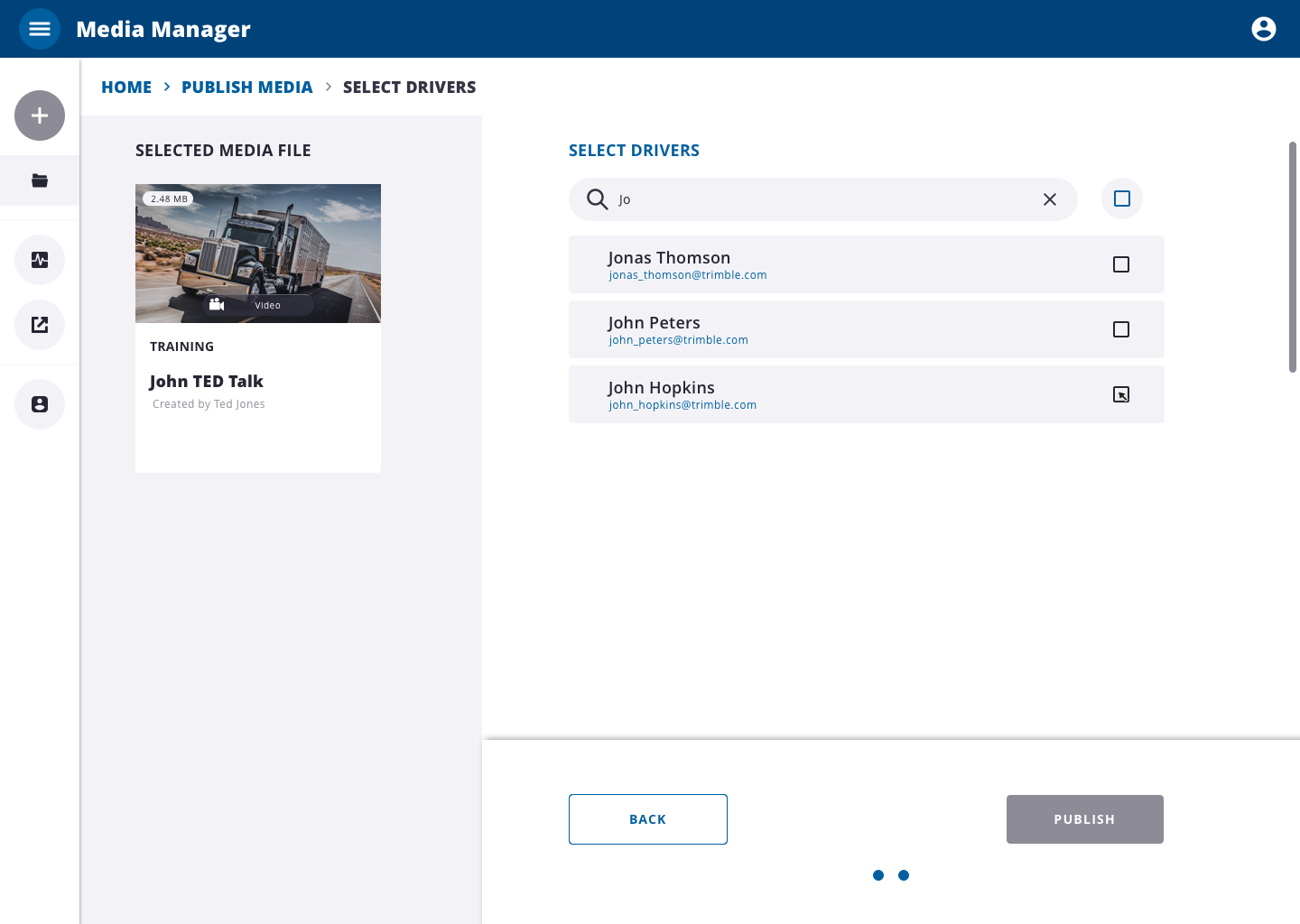
THE INTRODUCTION
PeopleNet myMedia™ gives fleets the ability to exchange documents, photos, videos and other multimedia files between drivers and back office personnel. Send multiple files at a time with the ability to target distribution to an entire fleet, specific individuals or a customised distribution list.
The main goal of this project is to revamp and redesign its existing legacy system to modern technologies with next-gen interactions and UX capabilities.
This involved both Web & Mobile Application where the users are completely different ( Web - Back Office Personnel | Mobile - Truck Drivers )
THE PROCESS
1. In-depth and extensive user research ( secondary research and getting in touch with contract UX researchers who were part of the client's team ) and study of market research document & next-gen business concept document.
2. Detailed creation of Information Architecture encompassing the ideations up to phase 3.
3. Story grooming along with the complete engineering team providing perspective towards UX directions for making team decisions.
4. Wireframes
5. Visual Design & Delivery
6. Working closely with Quality Assurance Team
THE VALUE ADDITION & ACCOMPLISHMENTS
1. Complete ownership of ideation to design from scratch.
2. Conducted Usability Testing ( Semi-Structured Interview ) and Heuristic Evaluation of the recently developed web and mobile application.
3. Presented my case study to the product owners and they immediately assigned as tasks to be taken.
4. The most challenging role for me was to operate as Lonewolf UI/UX Expert and redesign its experience for both Web & Tablet, within a timeframe of 8 months whereby the MVP release had to be made.
5. The product owners have been very happy with the way the visuals and user experience has come out, that they have signed another unique new project with Spime divison to take care of UX, which I am currently handling along with other projects.
This project was in its phase 2, and gearing up for a year end release, 2019. In the recently held Insight Conference 2019, the response has been very positive.
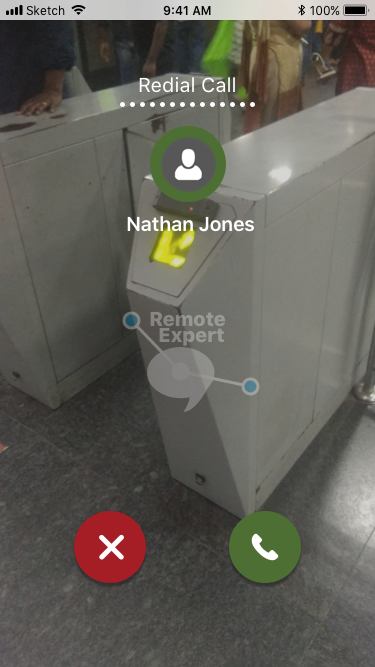

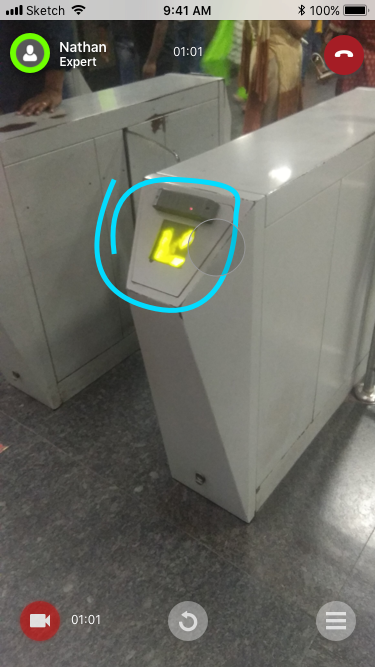
INTRODUCTION
This project came at point where the odds were staked against me, as I just started handling communications with the product owners / managers. The product manager was known as a tough task master. To me, this was a good problem to have at the very beginning of my career.
THE PROCESS
1. User Research and Study of Market Research Document
2. Storyboarding ( User Journey Mapping ) based on overall ideation
3. Information Architecture
4. Wireframes
5. Visual Design & Delivery to the developers.
THE VALUE ADDITION & ACCOMPLISHMENTS
Complete ownership of ideation to design from scratch ( Lonewolf - UX Execution )
After completion, handed over the project to the Field Service Management Team for final branding.
On release, the feedback has been very positive and was much appreciated by the Trimble Leadership Team.
Click the below links to view more about the product.
THE INTRODUCTION
The Trimble GuidEx system is an advanced navigation solution to streamline the operation of mining exploration equipment such as excavators, graders, drill rigs, bulldozers, etc. Designed to meet the needs of the mining exploration industry, the system improves productivity with easy, efficient, task specific navigation.
The Trimble SNS Vibe Array™ systems are advanced vehicle navigation solutions intended to quickly and efficiently navigate seismic drill & vibe operators to source targets. Built to meet the needs of the seismic survey industry, these systems improve productivity and safety with easy, efficient, task specific navigation.
The aim of the project was to do a major overhaul of UI / UX enhancement from the existing version to React Native Android compliance.
THE PROCESS
1. Reviewing the existing product.
2. Result of product review
- User Experience was complicated and too difficult to remember.
- UI elements were too pixelated and the brand colors where off the mark.
- The available window time for revamp was 1 month, post which they will have to continuously release updates to the existing customers.
- The available resource was only “ME” at maximum 50% Bandwidth due to shortage of Designers.
After all these predicaments, there was still one more big issue, which was there was no existing design source file and this tablet based suite of applications used nearly 650 different unique icons!
THE VALUE ADDITION & ACCOMPLISHMENTS
Proposed to first lay down the very foundation for every design project - Style guide. This decision was taken in order to not affect the business it currently was generating and also because of the limited resources in development as well.
Some of the major accomplishments are listed below,
1. Recreating the 650 icons and setting up the base and consistent style guide library across its suite of applications.
2. Rebranding to actual Trimble brand colors with minor UX changes and implementing them on to the current application into the Tablet devices ( Trimble’s own hardware which had screen exposure issues and matching according to it ).
At a later stage, my colleague, Pooja Kishan, joined in and took over me to handle the UX issues.
Click the below links to view more information about the product.
THE INTRODUCTION
The Spectra Precision® QML800G QuickMark Layout system is composed of two bright, green beam lasers that mark a highly visible “X” at the desired point location. The system communicates via Wifi with an Android tablet controller. Architectural files can be loaded directly onto the tablet and the floor plan can be viewed in the BuildView field software. Locating a point on the floor is as simple as tapping on the desired intersection or point on the drawing. The point is located on the floor with a laser X within a few seconds.
The system set up consists of aligning the two lasers together and defining an origin point and a scale. It is fast, efficient and very easy to use. Complicated shapes, arcs and curves are now easy to layout with no calculations required. Columns can be worked around with a software function. The unique Clutter Buster allows layout crews to work above clutter on the jobsite floor. Days of layout now become hours. Accuracy is improved and errors are not compounded from point to point. As a result, layout can be completed before other trades arrive.
The QML800G system is useful for drywall contractors, MEP contractors, general contractors, construction managers and architects.
I joined the project during it’s Phase 2 of development production. My part majorly involved in ideation of the feature workflow and designing the UI/UX of Pro Version features of QML800, which has been now rebranded as QML XT. The features I majorly worked on were Reporting, Offset Creation and Improving the overall User Experience.
THE PROCESS
1. Understanding the requirements given by product owners.
2. Initial User Research on understanding the users and their workflow ( User workflow without the device and with the device ) by cross questioning the product owners and reviewing the current QML800 free version and the video files of customer experiences.
3. Storyboarding ( User Journey Mapping ) the feature ideation ( handsketches ) which acts as a medium for determining the understanding of the product and its feature between the tech / dev team and the product owners and bringing both to a common ground.
4. Wireframes for the feature and incorporate the ideal workflow for the users
5. Visual Design for the feature with their brand colors.
6. Post approval - delivery of slices, and sequence workflow to dev team.
THE VALUE ADDITION
Proposed and collaborated with the product managers in conducting online survey with the beta users at the end of Phase 2. The responses have been so far so good.
Click the below links to view more about the product.
